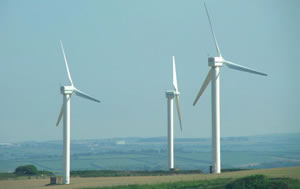
A Speaker is a device that delivers the air vibrations, which are heard by our ears. Actually, a speaker converts the electric signals into mechanical vibrations or sound that we hear. Magnetism is the base of speaker technology as it works on this principle, the oldest principle of physics for reproducing sound. In fact, the technology of speaker is just the reverse technology of the microphones, which even follows the same principle.
As the principle is old, the technology of the speaker is also an old one. Though many changes have happened regarding the design, quality and the functioning, the basic operating principle is the same as it has been for decades. The only difference that can be noticed is the non-electric permanent magnet made from highly refined metallurgic materials, in place of an electrical field coil used to create the magnetic field used before.
According to the audio system, a magnetic deck reproduces the audio information from the recorded support through an electrical signal. The speaker translates these signals to audio waves, which is almost the same sound as that of the original one. However, there are various components with which a speaker is made up of and thus are the vital part of speaker technology.
Magnet: It produces a steady, non-changing magnetic field. The electro-magnet close to it will either get attracted to it or repel, due to its alternating charge.
Voice-coil: It is the electromagnet made up of a coil of wire that is wrapped around a piece of metal of high conductivity.
Diaphragm: Also referred to as a cone, it is a component that vibrates when the voice coil moves and produces sound waves.
Spider: Called the lower suspension, it is a cloth disc that only allows the voice coil and the bottom of the diaphragm to move backward and forward.
Surround: Called the upper suspension, it is a ring that stops the cone or the diaphragm from moving to the side. Together with the spider, it forms the suspension system for the diaphragm and the voice coil.
Dust cap: It is a cover that is attached to the cone.
Frame: A component that holds all the parts together.
Switching over to the working of the speaker, the components that should be mentioned first are the voice coil and the magnet, Together, these are the base of the whole technology. The wire of the voice coil is insulated with a narrow layer of varnish and the ends of the wire are connected to the terminals on the speaker frame with the help of tinsel leads. These wires are very flexible pieces of braided wire that allows electricity to pass.
However, as the electricity flows through the wire of the voice coil, it sets up a magnetic field around itself and this magnetic field interacts with the magnetic field of the magnet. The closeness to the magnet causes the voice coil to move up and down. Now, if the charges are identical they will repel but if they are not then they will attract. That means that either it will draw the speaker down towards the magnet or will push it away.
As the voice coil starts moving, the diaphragm or the cone, which is attached to the top of the moving voice coil, also starts moving up and down. And this way the sound waves are generated from the electric impulses.





















